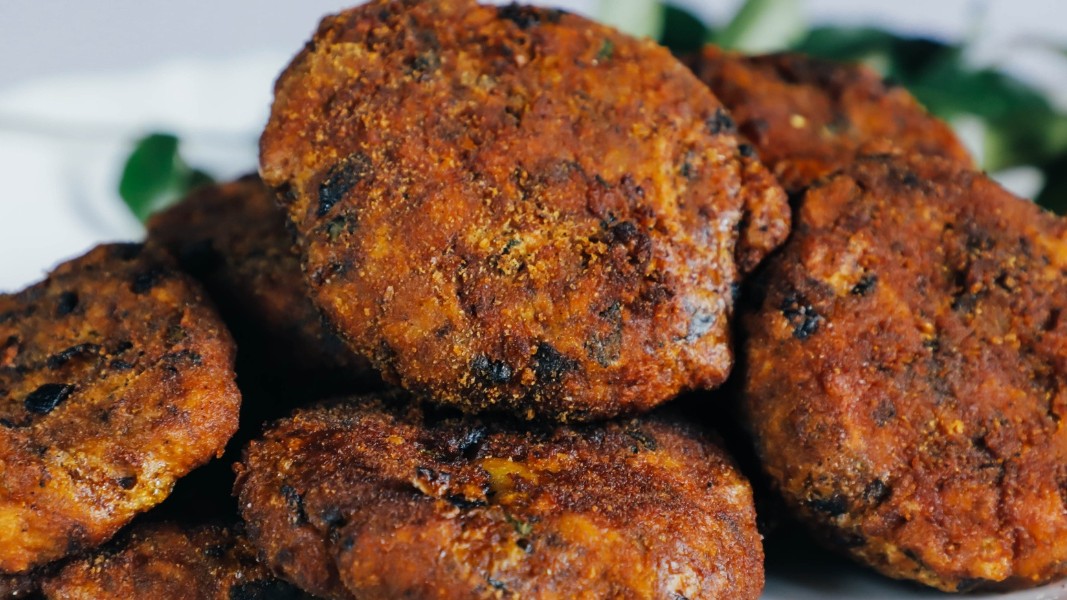Delicious recipe for fast: Vrat Ke Cutlet
Embarking on a spiritual journey through fasting deserves a culinary treat that transcends the ordinary. In the realm of vrat recipes, Vrat Ke Cutlet emerges as a divine creation, bringing together the purity of samak rice powder and the comforting essence of mashed potatoes. This blog delves into the essence of Vrat Ke Cutlet, exploring its main ingredients, what makes it special, and its quick and easy appeal.
Table of Contents
- 1. The Heart of Vrat Ke Cutlet - Samak Rice Powder and Mashed Potatoes:
- 2. The Symphony of Flavors:
- 3. Quick and Easy Pleasure:
- 4. A Versatile Temptation:
- 5. Benefits of Fasting:
- 6. Importance of Fasting during Navratri in India:
- 7. Navratri Fasting Food Ideas:
- 8. How to Make Vrat Ke Cutlet
- 9. Expert Tips
- 10. Recipe Car
The Heart of Vrat Ke Cutlet - Samak Rice Powder and Mashed Potatoes:
At the core of Vrat Ke Cutlet lies the harmonious union of two essential ingredients – samak rice powder and mashed potatoes. Samak rice, revered for its purity and suitability during fasting, lends a unique texture and flavor. Paired with the comforting familiarity of mashed potatoes, these cutlets become a wholesome and satisfying choice for vrat occasions.
The Symphony of Flavors:
What sets Vrat Ke Cutlet apart is the symphony of flavors that dance on your palate. The marriage of cumin seeds, ginger, green chili, and curry leaves creates an aromatic blend that elevates the humble mashed potatoes and samak rice powder to a culinary masterpiece. Each bite is a celebration of tradition and taste, making it an irresistible choice for those observing vrat.
Quick and Easy Pleasure:
In the hustle and bustle of our lives, convenience is often key. Vrat Ke Cutlet effortlessly blends the demands of modern lifestyles with the sanctity of traditional fasting recipes. With minimal ingredients and straightforward steps, it offers a quick and easy solution for those seeking a divine culinary experience without the fuss.
A Versatile Temptation:
Beyond its role as a standalone snack during vrat, Vrat Ke Cutlet proves to be a versatile temptation. It can adorn your vrat thali with grace or stand as an appetizer at festive gatherings, showcasing its adaptability and appeal across various occasions.
Benefits of Fasting:
- Detoxification and Cleansing: Fasting facilitates detoxification, allowing the body to eliminate toxins and rejuvenate its systems. This purification process contributes to overall well-being.
- Improved Digestion: Intermittent fasting can provide the digestive system with a much-needed break, promoting better digestion and absorption of nutrients during the non-fasting periods.
- Enhanced Mental Clarity: Fasting is associated with improved mental focus and clarity. It allows the mind to reset, leading to increased cognitive function and heightened awareness.
- Metabolic Health: Fasting can support metabolic health by regulating blood sugar levels, improving insulin sensitivity, and aiding in weight management.
- Spiritual Connection: Many individuals find that fasting enhances spiritual practices by fostering a sense of discipline, self-control, and mindfulness. It becomes a tool for introspection and heightened spiritual awareness.
Importance of Fasting during Navratri in India:
- Spiritual Significance: Navratri, dedicated to the goddess Durga, holds immense spiritual importance. Fasting during this period is believed to please the goddess and invite her blessings.
- Cultural Tradition: Fasting during Navratri is deeply ingrained in Indian culture. It's a symbolic gesture of devotion and reflects the cultural significance of honoring the divine feminine energy.
- Renewal and Purification: Navratri fasting is seen as a time for self-purification, where individuals engage in prayer, meditation, and reflection. It's a period of renewal and spiritual growth.
- Celebration of Nature's Rhythms: Navratri corresponds with the change in seasons, signifying the shift from summer to autumn. Fasting during this time aligns with the principles of living in harmony with nature.
Navratri Fasting Food Ideas:
- Sabudana Khichdi: Tapioca pearls cooked with peanuts, cumin, and potatoes provide a filling and nutritious option.
- Kuttu Ki Roti: Buckwheat flour is a popular choice during Navratri. Rotis made from kuttu atta are rich in nutrients and a good source of energy.
- Singhare Ke Atte Ka Samosa: Samosas made from water chestnut flour is a delicious snack option, keeping the fasting restrictions in mind.
- Fruit Chaat: A refreshing mix of fruits with a sprinkle of rock salt and cumin provides a healthy and hydrating snack.
- Makhana Kheer: A sweet treat made from fox nuts (makhana) and milk, flavored with cardamom and nuts, offers a delightful dessert option.
How to Make Vrat Ke Cutlet
- Let's start by heating some ghee in the Meyer Trivantage Kadai. To this add the cumin seeds, ginger, green chili and the curry leaves.
- Saute them until fragrant. Now add water to the kadai and bring it to a light boil.
- Once the water is boiling, add the coriander to the mix followed by the samak rice powder.
- Mix everything together and add the mashed potatoes along with salt and the black pepper powder.
- Mix everything together over medium to medium low heat until a dough is formed and all the water has been absorbed.
- Now remove the dough and shape it into a log. Cover and let it rest for 10 minutes.
- Once the dough has rested, cut and shape it into triangles or squares.
- Now heat some oil in the kadai over medium heat.
- Fry the shaped dough for 8-10 minutes or until golden brown and crispy.
- Serve hot with your favorite vrat chutneys.
Expert Tips
- Make sure to grind the samak rice into a fine powder for a good and soft cutlet.
- Make sure that the oil is hot and not cold while frying, cold oil will lead to cutlets that are oily and chewy in texture
- You can make and keep the shaped dough up to 2 days in advance as long as you store it in an airtight container.













Leave a comment